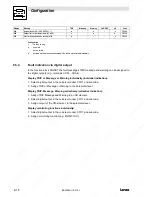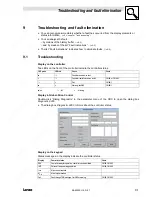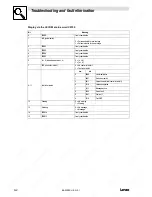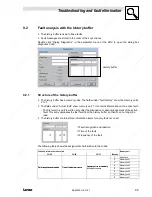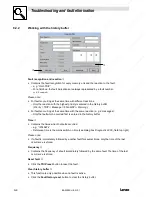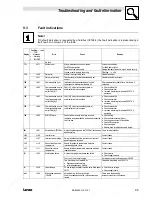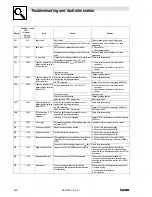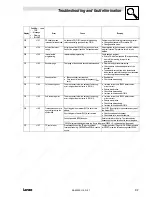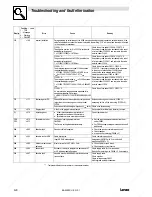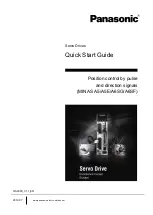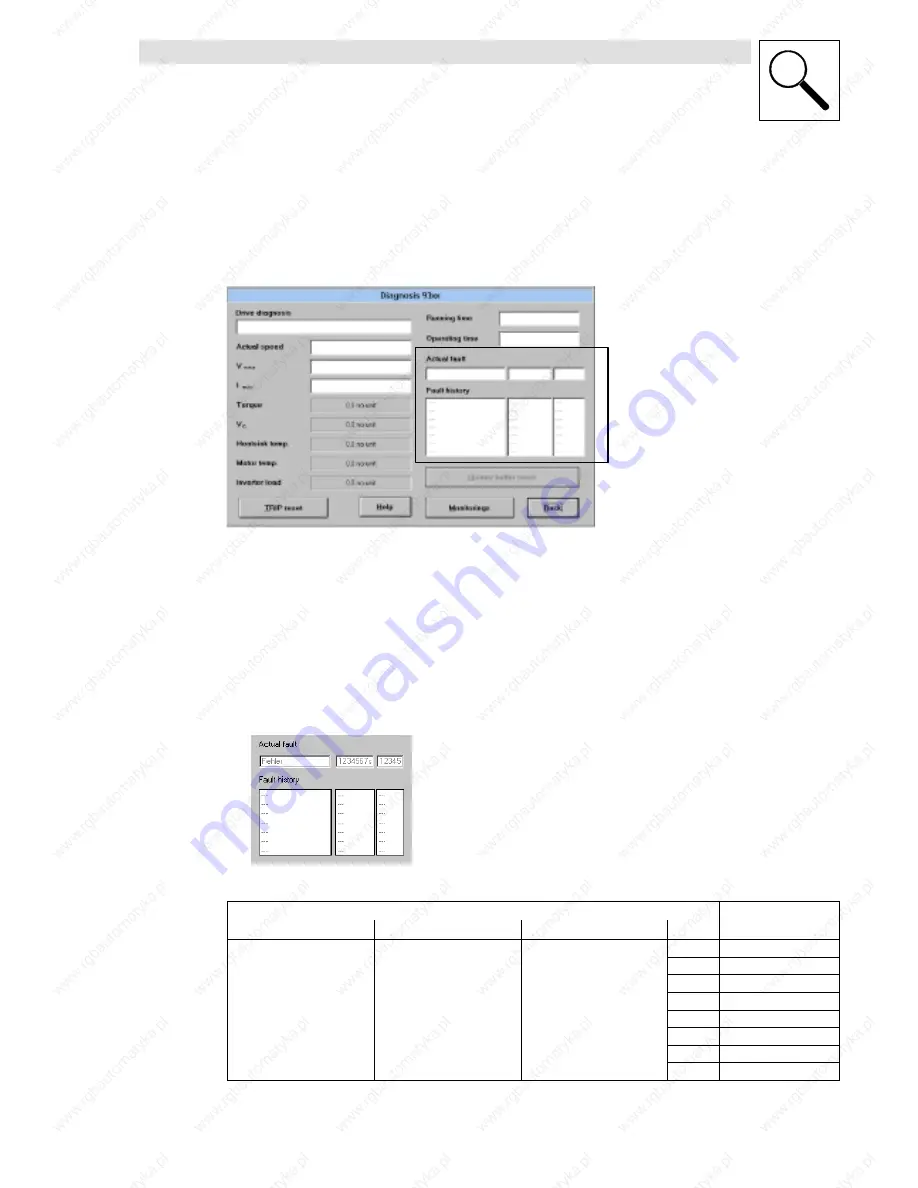
Troubleshooting and fault elimination
9-3
BA9300SU EN 2.1
9.2
Fault analysis with the history buffer
•
The history buffer is used to trace faults.
•
Fault messages are stored in the order of their occurrence.
Double click ” Dialog Diagnostic” in the parameter menu of the GDC to open the dialog box
Diagnostic 9300 :
History buffer
9.2.1
Structure of the history buffer
•
The history buffer has 8 memory units. The fields under ” fault history” show the memory units
2 to 7.
•
The fields under ” Actual fault” show memory unit 1. It contains information on the active fault.
– The first memory unit is written only after the elimination or acknowledgement of the active
fault. This entry eliminates the last fault from the history buffer so that it can no longer be
read.
•
The history buffer contains three information items for every fault occurred:
Fault recognition and reaction
ó
Time of the fault
ì
Frequency of the fault
ó ì
The following table shows the assignment of information to the codes.
Code and information to be called
Memory unit
C0168
C0169
C0170
Subcode
1
Active fault
2
Memory unit 1
3
Memory unit 2
Fa lt recognition and reaction
Time of the last occ rrence
Frequency of the immediately
4
Memory unit 3
Fault recognition and reaction
Time of the last occurrence
Frequency of the immediately
following occurrence
5
Memory unit 4
6
Memory unit 5
7
Memory unit 6
8
Memory unit 7
Summary of Contents for EVS9321-CS
Page 3: ...Operating Instructions EDB9300UES 00414796 Global Drive 9300 servo ...
Page 21: ...Technical data 3 8 BA9300SU EN 2 1 ...
Page 57: ...Installation 4 36 BA9300SU EN 2 1 ...
Page 73: ...During operation 6 4 BA9300SU EN 2 1 ...
Page 117: ...Troubleshooting and fault elimination 9 10 BA9300SU EN 2 1 ...
Page 119: ...Maintenance 10 2 BA9300SU EN 2 1 ...
Page 188: ...Appendix 11 69 BA9300SU EN 2 1 ...
Page 189: ...Appendix 11 70 BA9300SU EN 2 1 ...












